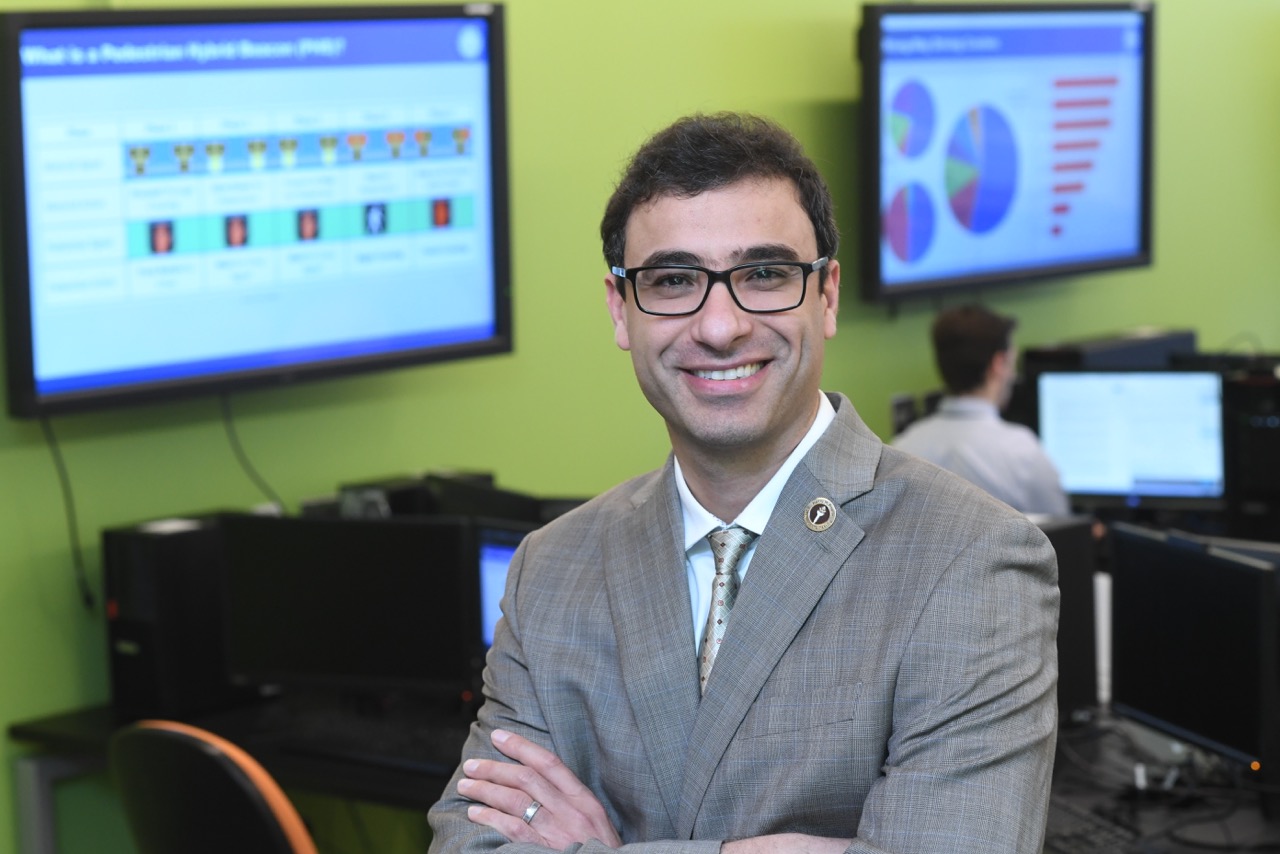With prestigious grant, CREATES researcher aims to reduce wrong-way driving fatalities
With prestigious grant, CREATES researcher aims to reduce wrong-way driving fatalities

To most, an exit ramp or highway interchange isn’t remarkable enough to prompt a second look. But to Dr. Mohammad Jalayer, these highway design features may hold a clue to saving lives.
Since 2012, the assistant professor of Civil & Environmental Engineering and a researcher at the Center for Research and Education in Advanced Transportation Engineering Systems (CREATES) has investigated wrong-way driving across the nation.
Now, a $40,000 grant from the National Cooperative Highway Research Program (NCHRP) will allow Jalayer to delve deeper into understanding this roadway phenomenon, as well as how to stop it.
When a motorized road user moves against the proper flow of traffic on physically divided highways or access ramps, it's called wrong-way driving. The problem is notorious for its severity, rather than its frequency.
Each year, about 400 fatalities are attributed to wrong-way driving in the United States, Jalayer said. New Jersey ranks among the top 15 states with the most wrong-way driving fatalities.
Exit ramps terminals are common locations for drivers to enter a physically separated highway in the wrong direction.
As they’re navigating their routes on and off highways, Jalayer explained, “drivers sometimes go in the opposite direction of traffic flow, inadvertently or deliberately.”
The risk is greater when driving under less than ideal conditions, for example, at nighttime when it’s harder, particularly for older drivers, to see clearly. The other drivers who are overrepresented in wrong-way collisions are those under the influence of alcohol or other drugs.
“Wrong Way” and “Do Not Enter” signs and pavement marking are commonly used methods of warning drivers, but they aren’t always effective.
Fortunately, there’s a lot more engineers like Jalayer can do. Changing the design features of the facilities themselves (the types of interchanges and ramps, for example) could go a long way toward clearing up drivers’ confusion. And using signs enhanced with eye-catching LED lights and dynamic signs warning about active wrong-way incidents could help, too.
Rowan isn’t working alone on this important research. The project, which received a total of $600,000 in NCHRP funding, is a three-year collaboration between Rowan and Auburn University in Alabama, the University of South Florida, and Arora and Associates, a private company.
“Every civil engineering faculty is looking for this kind of grant,” Jalayer acknowledged. “We ended up with a great team, and I was so happy to hear we were selected.”
The project will culminate in a national wrong-way driving summit, expected to take place in Irvine, Calif., in 2021. There, Jalayer and his team will present the results of their studies to practitioners from all 50 states, including traffic engineers and representatives from state departments of transportation and local government agencies.
“We want to identify gaps in existing research and put together a handbook of traditional and advanced safety measures” for these practitioners to use, Jalayer said. “These measures can be implemented across the country.”
Although the scope of his work extends well beyond wrong-way driving, Jalayer can sum up his numerous projects with a single goal.
“Fatalities have a direct cost and an indirect cost: the burden to society, the impact on the family,” Jalayer said. “We can save people. If I save one person’s life, that’s an achievement.”